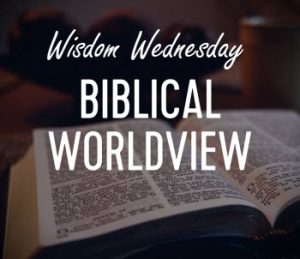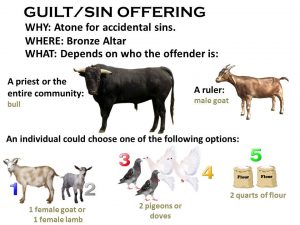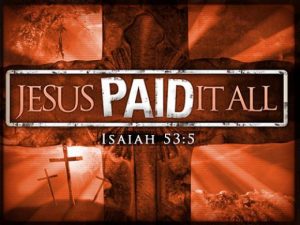Wisdom-Trek / Creating a Legacy
Welcome to Day 861 of our Wisdom-Trek, and thank you for joining me.
I am Guthrie Chamberlain, Your Guide to Wisdom
Sin Offering vs. Forgiveness – Wisdom Wednesday

Thank you for joining us for our five days per week wisdom and legacy building podcast. Today is Day 861 of our trek, and it is Wisdom Wednesday. The past several months on Wednesday we have been focusing on interpreting current events through a Biblical Worldview.
To establish a Biblical Worldview, it is important that you also have a proper understanding of God’s Word. Especially in our western cultures, we do not fully understand the scriptures from the mindset and culture of the authors.
In order to help us all have a better understanding of God’s word, we are investing the next several months on Wednesday reviewing a series of essays from one of today’s most prominent Hebrew Scholars Dr. Micheal S. Heiser which he has compiled into a book titled “I Dare You Not to Bore Me with the Bible.”
We are broadcasting from our studio at The Big House in Marietta, Ohio. To be in a good relationship with others, we must be willing to forgive them when they wrong us or fall short of our expectations. Forgiveness is even essential to maintain a healthy mental, emotional, physical, and spiritual life. In today’s essay, we will explore the purpose of the Old Testament for the sin offering and if it actually provided forgiveness.
Sin Offerings vs. Forgiveness

Hebrews 10:4 proclaims, “For it is not possible for the blood of bulls and goats to take away sins.” Leviticus seems to tell a different story. Even casually reading the book, we notice that Israelites who bring proper sacrifices “will be forgiven.” One example of this is Leviticus 4:20, “Just as he does with the bull offered as a sin offering for the high priest. Through this process, the priest will purify the people, making them right with the Lord, and they will be forgiven.”
Have we reached an impasse or are there contradictions in God’s word?
Rather than labeling this a contradiction, we might examine our own perceptions of Old Testament sacrifices—specifically, the sin offering. “Sin offering” is a translation of the Hebrew term (chatta‘t), which has the basic meaning of “to miss the mark” or “to fall short.” In using a traditional, familiar rendering, many English Bible translations cause us to misunderstand this sacrifice.
· The Goal of the Sin Offering
The label “sin offering” assumes that the goal of this sacrifice was forgiveness for moral failures or violations, or sins, as we think of them. Leviticus reveals this is not the case. The sin offering was used in cases where people suffered from a bodily discharge (Lev 15), at the dedication of a new altar (Lev 8), or when a Nazirite completes a vow of abstinence (Lev 12).
The real goal of the sin offering was ritual purification. It was designed to guard sacred space or territory sanctified by God’s presence—from infection by impurity. By definition, every person or object “falls short” of divine perfection and must, therefore, be ritually marked as acceptable for holy ground. The sin offering—better rendered as “purification offering,” was therefore applied to people and inanimate objects to mark them as acceptable before God. These people (and objects) were not unacceptable because they had done evil, but because they were imperfect. Instead they “fell short” of the holy perfection that God’s presence required. The ritual reinforced the idea of the complete otherness of God.
Depending on the individual’s status in the community, whether priest or commoner, the blood of the offering was either used outside or inside the sanctuary. When the sin offering was for a priest, the blood was brought inside the sanctuary. This signified the priest’s undeserved, but now acceptable access to the holy ground of the sanctuary area. On the Day of Atonement (Lev 16), the blood of the sin offering was brought before the mercy seat (the golden cover for the ark or the covenant) within the holy of holies. Not because the high priest had committed worse sins than anyone else, but because he needed closer access to the divine presence on that day. The sin offering was about purification for access to God.
· What About Forgiveness?
If the sin offering of the Old Testament didn’t purge people of moral guilt, what about the forgiven language? What happened when people did evil?

The verb translated “forgive” (salach) essentially means “to be positively disposed toward.” In the context of purification, God now approves of the person or object entering His presence. While the verb may be used elsewhere to address moral guilt (such as in Psalms 25:11, “For the honor of your name, O Lord, forgive my many, many sins”), when it comes to the Levitical sacrifice itself, the point was not absolution, but acceptability for entering God’s presence. Intentional violations of the moral law of God fell into two broad categories and were dealt with accordingly: those for which there was no remedy, resulting in capital punishment, and those for which restitution was required. For the latter, Old Testament Law called for reparations to victims to restore the offender.
In this context, the words of Hebrews 10:4 are right on target. Old Testament sacrifices could not provide release from spiritual and moral guilt. They merely allowed people to participate in a temporary and ultimately inadequate system while teaching them about God’s nature. Only Jesus’s greater sacrifice could solve the real problem of our moral guilt before a holy God.
Next Wisdom Wednesday we will continue with Moses as we look at Dr. Heiser’s next essay titled “There is a Devil in the Details.” I believe you will find this another interesting topic to consider as we build our Biblical worldview.

Tomorrow we will continue with our 3-minute wisdom nugget that will provide you with a bit of wisdom that, if followed, will allow you to grow healthier, wealthier, and wiser each day. So encourage your friends and family to join us and then come along with us tomorrow for another day of our Wisdom-Trek, Creating a Legacy.
That will finish our trek for today. If you would like to listen to any of our past 860 treks or read the Wisdom Journal, they are available at Wisdom-Trek.com. I encourage you to subscribe to Apple Podcast or Google Play so that each day’s trek will be downloaded automatically.
Thank you for allowing me to be your guide, mentor, and most of all your friend as I serve you through the Wisdom-Trek podcast and journal.
As we take this trek together, let us always:
- Live Abundantly (Fully)
- Love Unconditionally
- Listen Intentionally
- Learn Continuously
- Lend to others Generously
- Lead with Integrity
- Leave a Living Legacy Each Day
I am Guthrie Chamberlain reminding you to Keep Moving Forward, Enjoy Your Journey, and Create a Great Day Everyday! See you tomorrow!